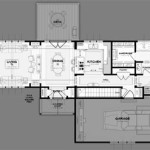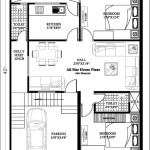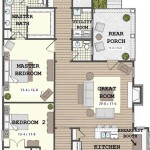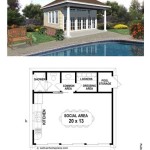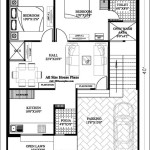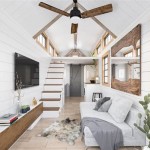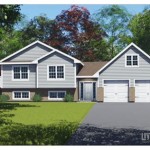Contemporary Small House Plans: Modern Living in Compact Spaces
The contemporary small house movement is gaining momentum, driven by factors like affordability, environmental consciousness, and a growing appreciation for minimalist design. These homes, often referred to as tiny homes or micro-homes, offer a unique blend of practicality and style, providing a comfortable and efficient living experience in a smaller footprint. This article delves into the key aspects of contemporary small house plans, exploring the advantages, design considerations, and examples of innovative layouts that maximize space and functionality.
Advantages of Contemporary Small House Plans
Contemporary small house plans offer a number of advantages over traditional larger homes, making them an appealing choice for a wide range of individuals and families:
-
Affordability:
The reduced construction costs associated with smaller homes make them more accessible, particularly in areas with high housing prices. This allows homeowners to invest in quality materials and finishes while staying within a manageable budget. -
Sustainability:
Small houses minimize energy consumption through reduced heating and cooling needs, resulting in lower utility bills and a smaller environmental footprint. -
Lower Maintenance:
Less space translates to less cleaning and upkeep, freeing up time and resources for other activities. -
Minimalism:
Many contemporary small house designs embrace minimalist principles, promoting a sense of order and tranquility by focusing on essential elements and eliminating clutter. -
Flexibility:
Open floor plans and adaptable spaces allow for diverse living arrangements, catering to changing needs and lifestyles.
Key Design Considerations for Contemporary Small Houses
Creating a functional and aesthetically pleasing contemporary small house requires careful planning and attention to detail. Here are some key design considerations:
Space Optimization
Maximizing space is paramount in small house design. This involves employing strategies such as:
-
Open Floor Plans:
Eliminating unnecessary walls creates a feeling of spaciousness and allows for flexible furniture arrangements. -
Multifunctional Furniture:
Items like sofa beds, convertible dining tables, and storage ottomans serve multiple purposes, maximizing utility within a limited area. -
Vertical Storage:
Utilizing walls for shelves, cabinets, and built-in storage solutions maximizes vertical space and minimizes clutter. -
Smart Appliances:
Compact refrigerators, dishwashers, and washing machines save valuable floor space without compromising functionality.
Natural Light and Ventilation
A crucial element in contemporary small house design is maximizing natural light and ventilation. This can be achieved through:
-
Large Windows:
Strategically placed windows allow ample sunlight to penetrate the interior, creating a bright and airy atmosphere. -
Skylights:
Roof windows provide additional natural light and can enhance the sense of spaciousness. -
Cross-Ventilation:
Positioning windows on opposite sides of the house allows for efficient air circulation, maintaining a comfortable indoor temperature.
Modern Aesthetics
Contemporary small house plans typically showcase clean lines, simple forms, and a minimalist palette. Key elements include:
-
Neutral Color Schemes:
Lighter colors and natural materials create a sense of spaciousness and enhance natural light. -
Geometric Shapes:
Rectangular and square layouts are prevalent, creating a sense of order and functionality. -
High Ceilings:
Vertical space adds a feeling of grandeur and openness, even in a small footprint. -
Minimalist Decor:
Focus on functional furniture, natural materials, and simple decor to create a clean and uncluttered look.
Examples of Innovative Small House Plans
Contemporary small house plans are constantly evolving, with architects and designers pushing the boundaries of creativity and functionality. Some innovative examples include:
-
The Tiny House Movement:
Tiny homes, typically under 400 square feet, prioritize simplicity and affordability, often featuring portable designs that can be moved easily. -
Modular Homes:
Pre-fabricated units are assembled on-site, offering faster construction times and greater flexibility in design. -
Vertical Living:
Multi-level homes, often built in urban areas with limited land, maximize vertical space to create efficient and sustainable living spaces. -
Off-Grid Designs:
Small homes designed for self-sufficiency, incorporating renewable energy sources and water harvesting systems, offer a sustainable alternative to traditional housing.
Contemporary small house plans represent a modern approach to living, prioritizing functionality, sustainability, and affordability. By embracing space-saving features, natural light, and minimalist aesthetics, these homes offer a comfortable and stylish alternative for individuals and families seeking a simpler and more efficient lifestyle.

Folkstone 5178 1 Bedroom And 5 Baths The House Designers

Small Modern House Plans Home Floor Designs The Designers

12 Most Amazing Small Contemporary House Designs Modern Plans Design

Best Ing Small House Plans Mark Stewart Modern Home Design

Contemporary Nyhus 491 Robinson Plans House Exterior Small

Contemporary Cabin House Plan 2 Bedroom 1200 Sq Ft Modern Plans

Modern Style On A Budget 10 Tiny Cool House Plans Houseplans Blog Com

Tiny Modern House Plans Small And Floor

Modern Small House Plan With Flat Roof Lovely Designs Com

Small House Plan Ch181 In Modern Contemporary Architecture Home Design


